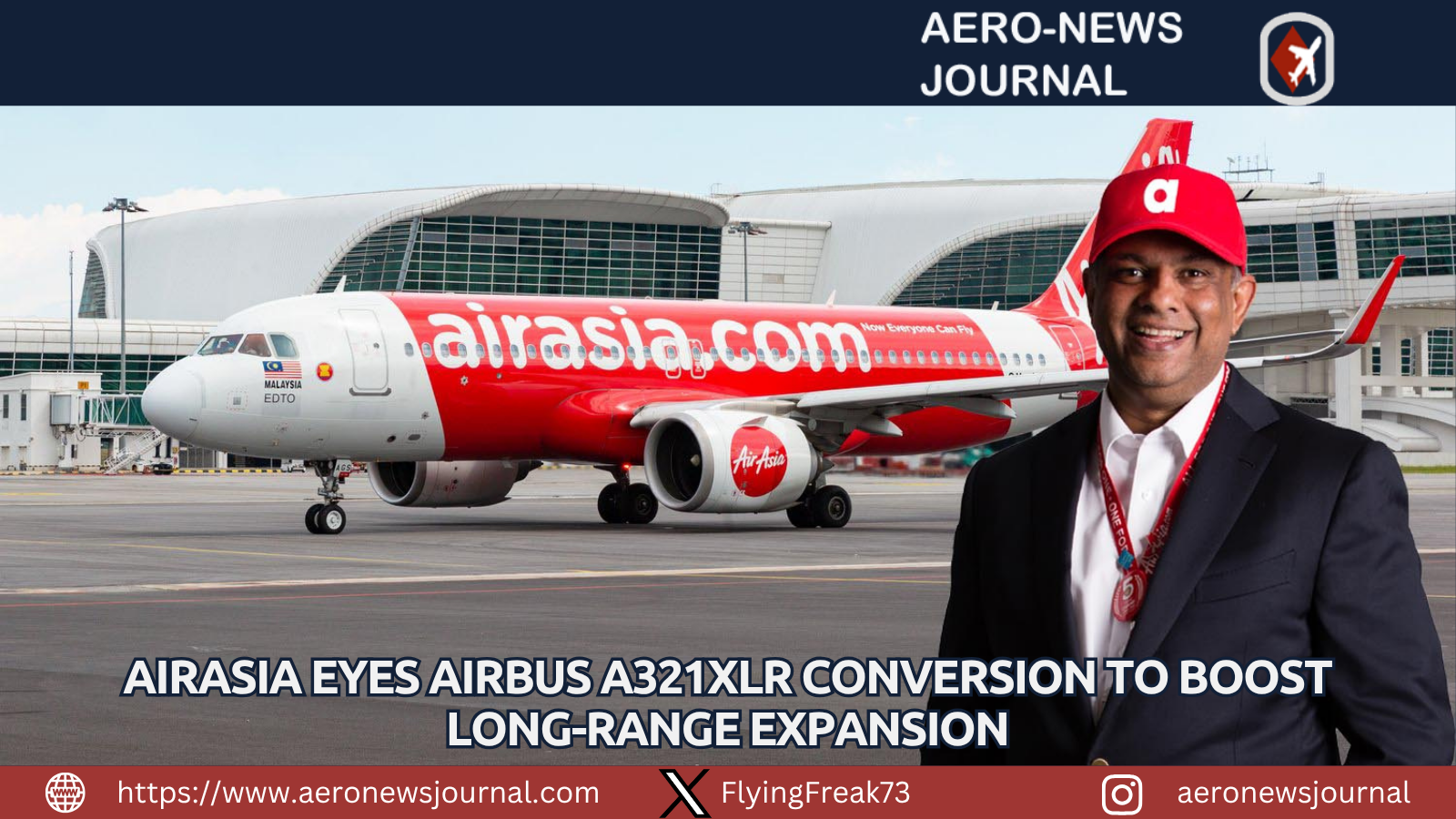
Kuala Lumpur, July 4 - AirAsia, the Malaysia-based low-cost carrier and one of Asia’s largest airlines, is reportedly engaged in discussions with Airbus to convert a portion of its existing narrow-body aircraft orders into the long-range A321XLR model, according to industry sources. This strategic move comes as the airline navigates its path out of financial restructuring, aiming to bolster its global expansion plans with more versatile, longer-range aircraft. The negotiations, which could reshape AirAsia’s fleet composition, reflect the airline’s ambition to extend its reach into new markets while optimizing its operational efficiency.
.gif)
The A321XLR, Airbus’ longest-range narrow-body jet, is designed to operate flights of up to 4,700 nautical miles, enabling low-cost carriers like AirAsia to serve longer routes without the need for wide-body aircraft. This capability aligns with AirAsia’s vision to expand its network beyond its traditional Southeast Asian stronghold. Tony Fernandes, CEO of AirAsia’s parent company, Capital A Group, indicated last month that the airline was considering acquiring 50 to 70 A321XLR jets within a one-to-three-month timeframe. However, he emphasized that completing the group’s financial reorganization remains the top priority. AirAsia, which has over 350 Airbus planes on order, has been steadily restructuring its order book following financial challenges triggered by the COVID-19 pandemic, which severely impacted the aviation industry.
Sources suggest that a potential deal could be finalized as early as this week, coinciding with Malaysian Prime Minister Anwar Ibrahim’s visit to Paris. While such timing could signal a high-profile announcement, a separate source cautioned that the deal is not guaranteed, highlighting the complexities of finalizing large-scale aircraft orders. The conversion of existing orders to the A321XLR would not necessarily increase the total number of aircraft AirAsia has on order, but would shift its fleet toward models better suited for long-haul, low-cost operations. This move would support Airbus’ A321XLR program, reinforcing its position as the industry’s leading long-range narrow-body jet. AirAsia’s interest in the A321XLR is part of a broader strategy to enhance its global presence. Fernandes has expressed ambitions to establish a hub in the Gulf region, with ongoing talks involving four potential locations, including Saudi Arabia and Ras Al Khaimah in the United Arab Emirates. Such a hub would facilitate one-stop connectivity to Europe and other long-haul destinations, leveraging the A321XLR’s extended range to serve secondary markets efficiently. Meanwhile, discussions for a large order of smaller A220 jets, which would suit regional routes, have reportedly taken a backseat as AirAsia prioritizes its long-range fleet expansion.
The airline’s fleet strategy also includes integrating its short-haul and long-haul operations under a unified AirAsia brand. By incorporating the A321XLR alongside its existing A321neo and A330neo orders, AirAsia aims to create a flexible, fuel-efficient fleet capable of serving both regional and intercontinental routes. This approach is expected to reduce costs while supporting high-demand routes and new market entries. As AirAsia prepares to take delivery of 14 new aircraft in 2025—four from Airbus and ten from lessors—the potential inclusion of the A321XLR could mark a significant step in its post-pandemic recovery and global ambitions.
